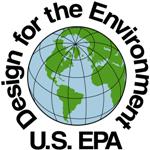At Home
Save energy
- Use the Energy Star program (www.energystar.gov) to find energy efficient products for your home. The right choices can save families about 30% ($400 a year) while reducing our emissions of greenhouse gases. Whether you are looking to replace old appliances, remodel, or buy a new house, the can help. ENERGY STAR is the government's backed symbol for energy efficiency. The ENERGY STAR label makes it easy to know which products to buy without sacrificing features, style or comfort that today's consumers expect.
- Turn off appliances and lights when you leave the room.
- Use the microwave to cook small meals. (It uses less power than an oven.)
- Purchase "Green Power" for your home's electricity. (Contact your power supplier to see where and if it is available.)
- Have leaky air conditioning and refrigeration systems repaired.
- Cut back on air conditioning and heating use if you can.
- Insulate your home, water heater and pipes.
- Keep in mind that every trip adds to air pollution. Learn more at It All Adds Up (www.italladdsup.gov).
More information and links:
Water and garden
- Don't let the water run while shaving or brushing teeth.
- Take short showers instead of tub baths.
- Keep drinking water in the refrigerator instead of letting the faucet run until the water is cool.
- Scrape, rather than rinse, dishes before loading into the dishwasher; wash only full loads.
- Wash only full loads of laundry or use the appropriate water level or load size selection on the washing machine.
- Buy high-efficient plumbing fixtures & appliances.
- Repair all leaks (a leaky toilet can waste 200 gallons a day).
- Water the lawn or garden during the coolest part of the day (early morning is best).
- Water plants differently according to what they need. Check with your local extension service or nurseries for advice.
- Set sprinklers to water the lawn or garden only – not the street or sidewalk.
- Use soaker hoses or trickle irrigation systems for trees and shrubs.
- Keep your yard healthy - dethatch, use mulch, etc.
- Sweep outside instead of using a hose.
- More information about using water efficiently at home
- Learn how to plant trees, build a pond, compost, and more from the Department of Agriculture's Natural Resources Conservation Service (www.nrcs.usda.gov/feature/backyard).
More information and links:
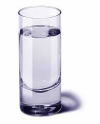 |
Is my tap water safe? |
 |
How do I find products or services that are water-efficient? |
 |
How can I prevent stormwater pollution? |
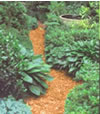 |
How can I care for my lawn and yard?
|
 |
How do I use pesticides safely?
|
Reduce / reuse/ recycle
Practice the three R's: first reduce how much you use, then reuse what you can, and then recycle the rest. Then, dispose of what's left in the most environmentally friendly way. Read the tips below and explore the Consumer's Handbook for Reducing Solid Waste (www.epa.gov/epaoswer/non-hw/reduce/catbook)
Reduce:
- Buy permanent items instead of disposables.
- Buy and use only what you need.
- Buy products with less packaging.
- Buy products that use less toxic chemicals.
Reuse:
- Repair items as much as possible.
- Use durable coffee mugs.
- Use cloth napkins or towels.
- Clean out juice bottles and use them for water.
- Use empty jars to hold leftover food.
- Reuse boxes.
- Purchase refillable pens and pencils.
- Participate in a paint collection and reuse program. For information on handling household solid waste, visit www.epa.gov/epaoswer/osw/citizens.htm or call 1-800-424-9346.
- Donate extras to people you know or to charity instead of throwing them away.
Recycle:
- Recycle paper (printer paper, newspapers, mail, etc.), plastic, glass bottles, cardboard, and aluminum cans. If your community doesn't collect at the curb, take them to a collection center.
- Recycle electronics . More information is at www.epa.gov/reg3wcmd/eCycling.htm
- Recycle used motor oil (read an EPA brochure in PDF format; 8pp., 750K; epa.gov/epaoswer/non-hw/recycle/recy-oil.pdf).
- Compost food scraps, grass and other yard clippings, and dead plants.
- Close the loop - buy recycled products and products that use recycled packaging. That's what makes recycling economically possible. Learn more at epa.gov/epaoswer/non-hw/muncpl/buyrec.htm
More information and links:
 |
What and where can I recycle?
|
 |
How can I reduce the amount of
garbage I generate?
|
Handle toxics properly
Handle toxics properly Common household items such as paints, cleaners, oils, batteries, and pesticides contain hazardous components. Although we cannot completely stop using hazardous products, we can make sure that leftovers are managed properly. The best way to handle household hazardous waste is to give leftovers to someone else to use.
- Many communities have set up collection programs to keep hazardous products out of landfills and combustors. More than 3,000 HHW collection programs exist in the United States. Read more.
Look for products carrying the "Design for the Environment" label. The DfE label allows consumers to quickly identify and choose more products that are safer for their families and also help protect the environment. DfE uses scientific information to identify products designed to be safer for the environment and to help you choose safer cleaning products. You can look for the DfE label to find products with the safest possible ingredients and help protect the environment.
More information and links:
 |
How do I reduce and dispose of household hazardous wastes?
|
How can I protect my children from lead poisoning?
|
More ideas
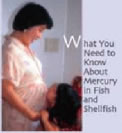 |
How can I protect my family from mercury in fish?
|
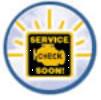 |
Should I care if my vehicle's "check engine" light turns on? |
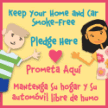 |
How can I protect my children from second-hand smoke? |
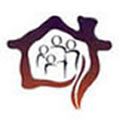 |
How can I find out if my home has a radon problem?
|
You will need Adobe
Acrobat Reader ![]() to view a number of files on this site. Click here for more information
about Adobe Acrobat.
to view a number of files on this site. Click here for more information
about Adobe Acrobat.



